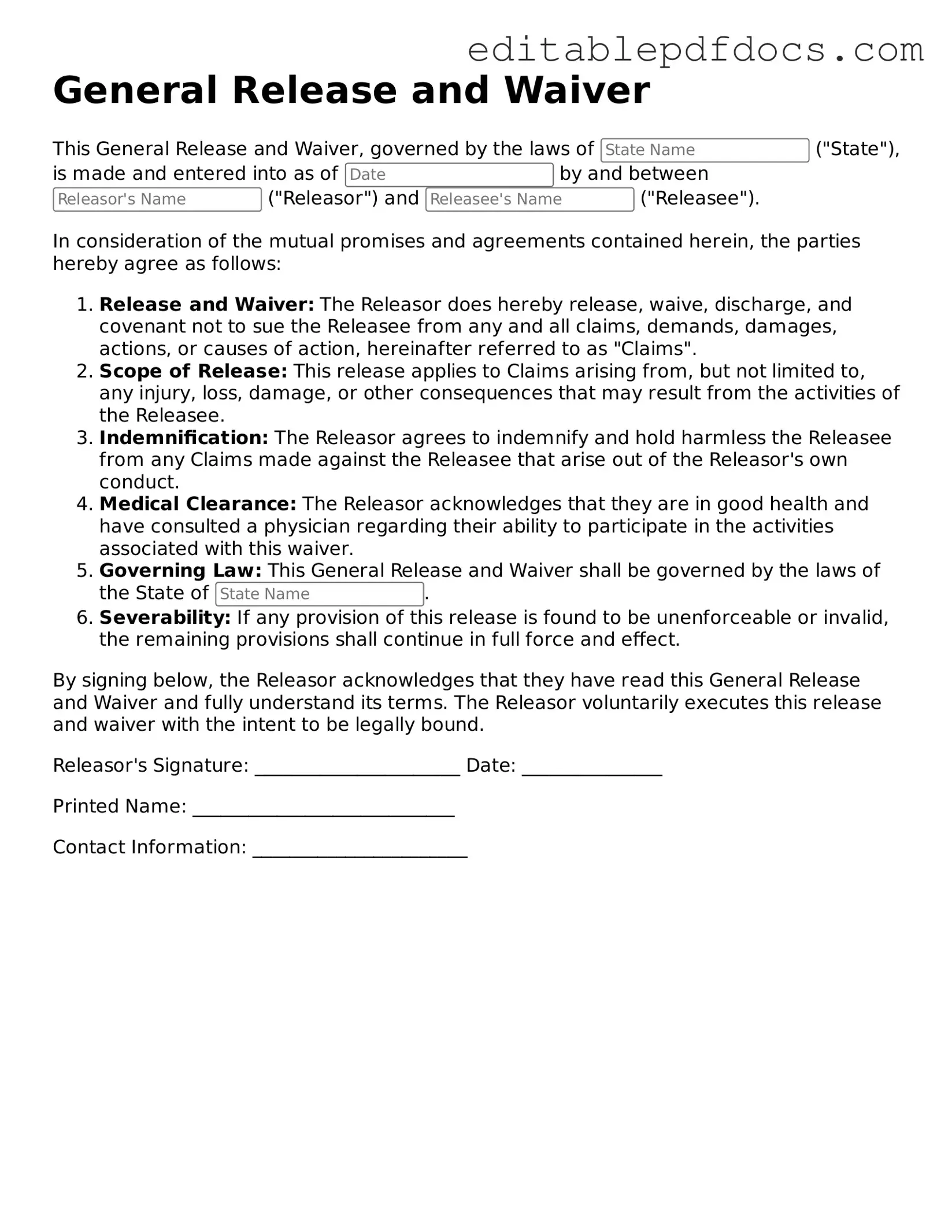When filling out the General Release and Waiver form, individuals often overlook critical details that can affect the validity of the document. One common mistake is failing to read the entire form thoroughly before signing. This can lead to misunderstandings about the rights being waived and the implications of the release.
Another frequent error is neglecting to include all relevant parties. It is essential to ensure that all individuals and entities involved in the agreement are named. Omitting a party can result in legal complications later, as the waiver may not fully protect all intended parties.
People often misinterpret the scope of the release. The language in these forms can be complex, and misunderstanding what is being released can lead to unintended consequences. It is crucial to clarify whether the release covers future claims or only those arising from past incidents.
Inaccurate dates are another common oversight. Filling in the wrong date can invalidate the release, especially if it is tied to a specific event or timeframe. Double-checking all dates ensures that the document is legally sound.
Signatures are vital, yet many individuals forget to sign the form or neglect to have it witnessed when required. A missing signature can render the document ineffective, so it is important to ensure that all necessary signatures are present.
Another mistake involves not providing adequate consideration. In legal terms, consideration refers to something of value exchanged between parties. Without it, the waiver may not hold up in court. Individuals should ensure that the terms of the agreement are clear and mutually beneficial.
Failing to consult with a legal professional before signing can be detrimental. Many individuals assume they understand the implications of the waiver but may not be aware of specific legal nuances. Seeking expert advice can prevent future disputes and misunderstandings.
People sometimes use vague language when describing the circumstances surrounding the release. Specificity is crucial in these documents. Clearly outlining the events or actions being released helps to avoid ambiguity and potential legal challenges.
Finally, individuals may not keep a copy of the signed form for their records. Retaining a copy is essential for future reference and can be critical in case of any disputes. It is advisable to store the document in a safe place where it can be easily accessed if needed.
